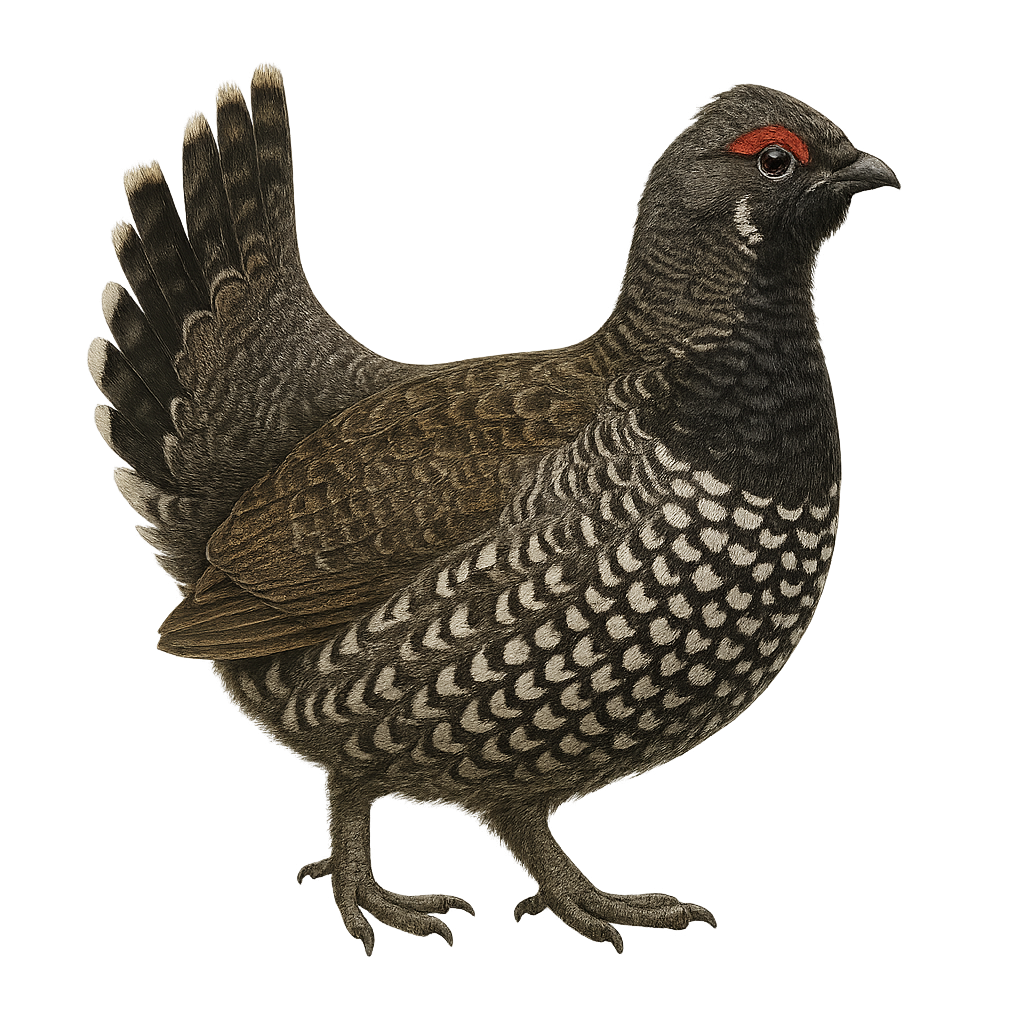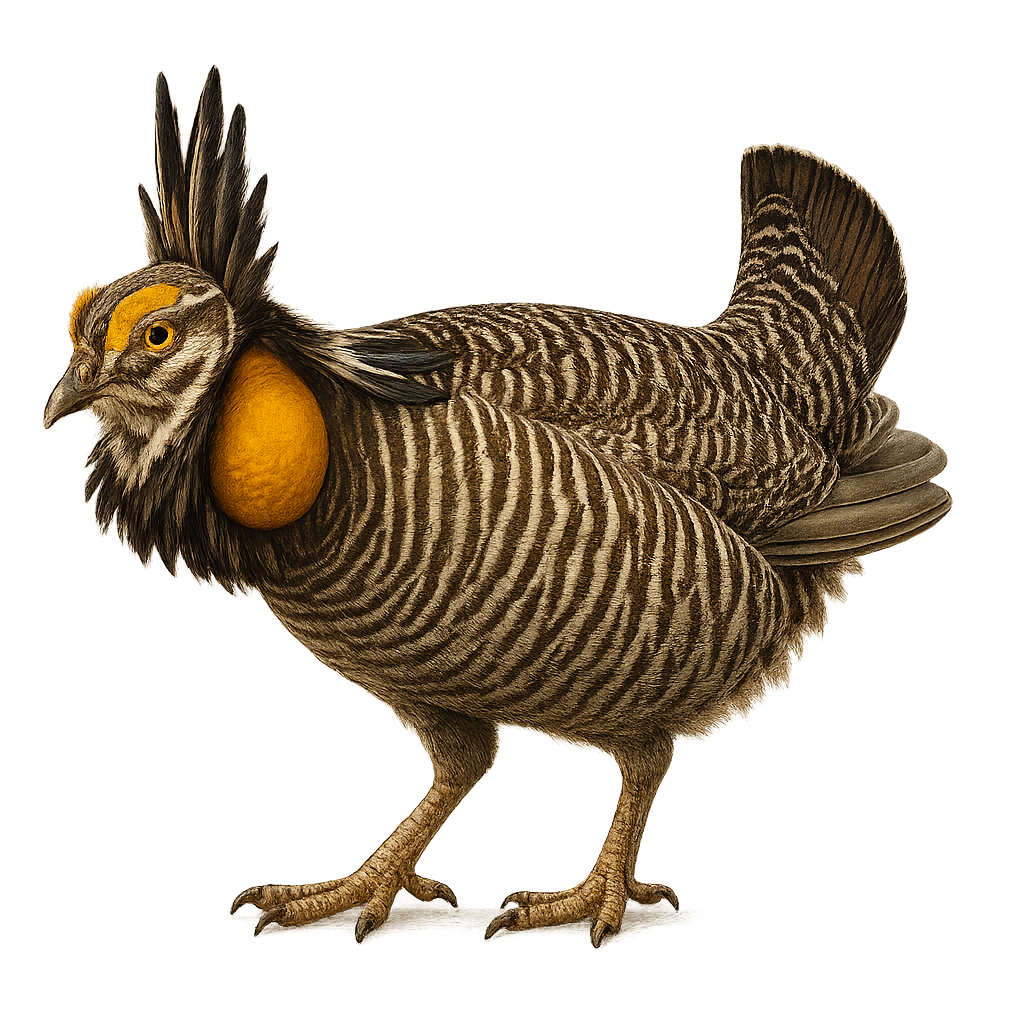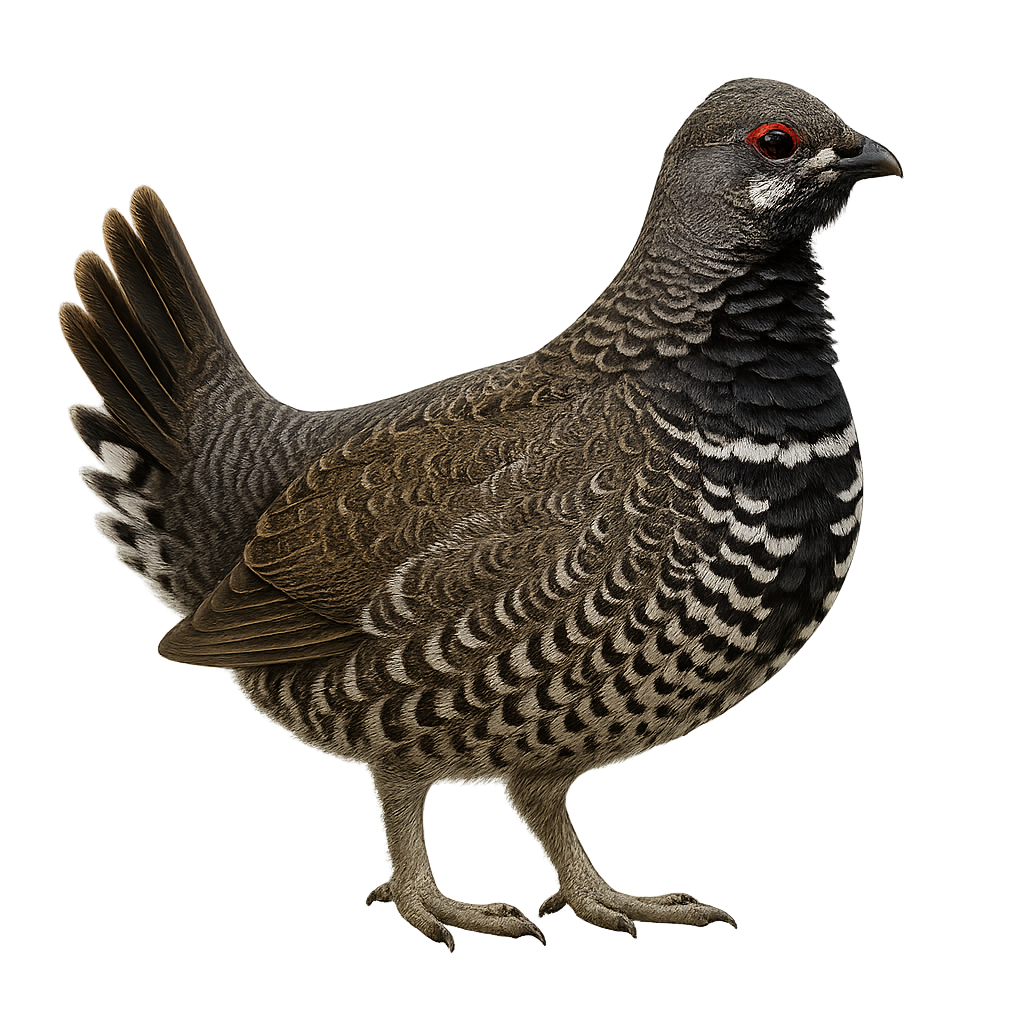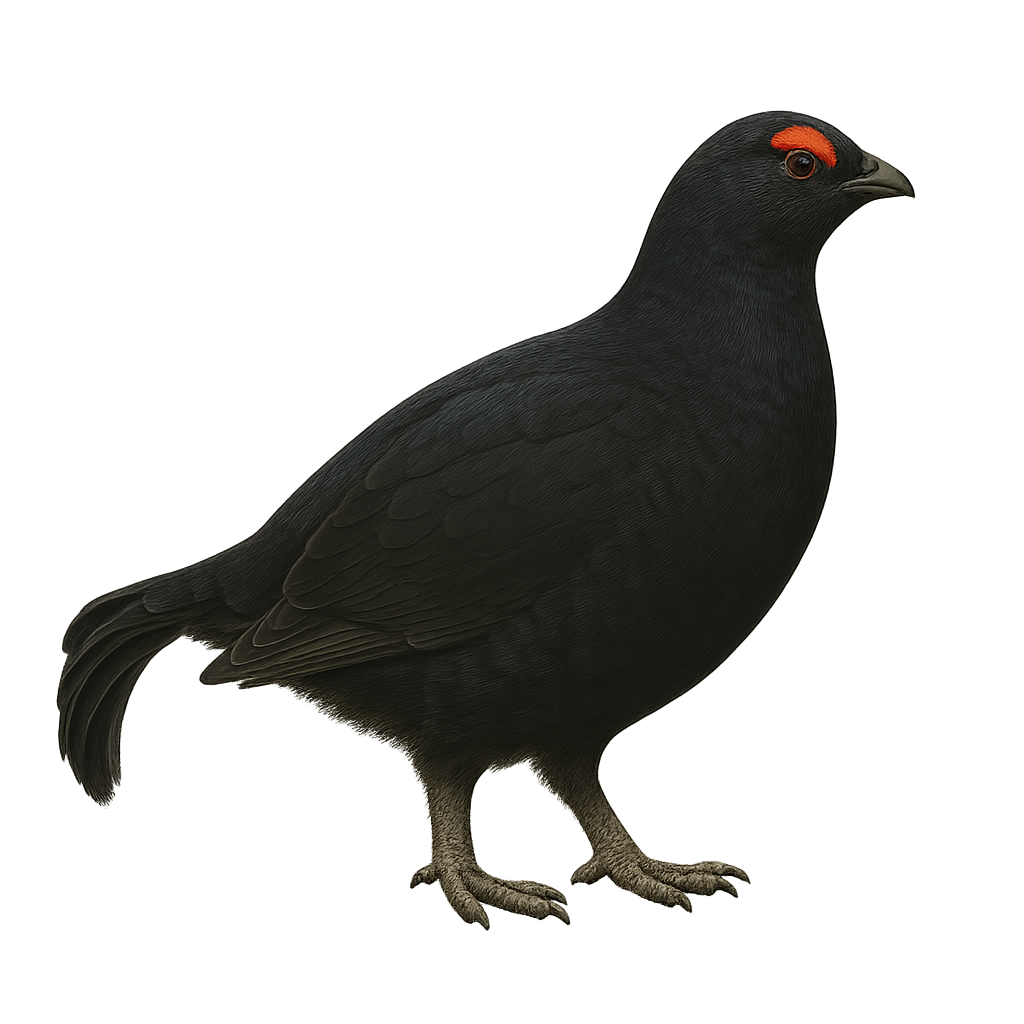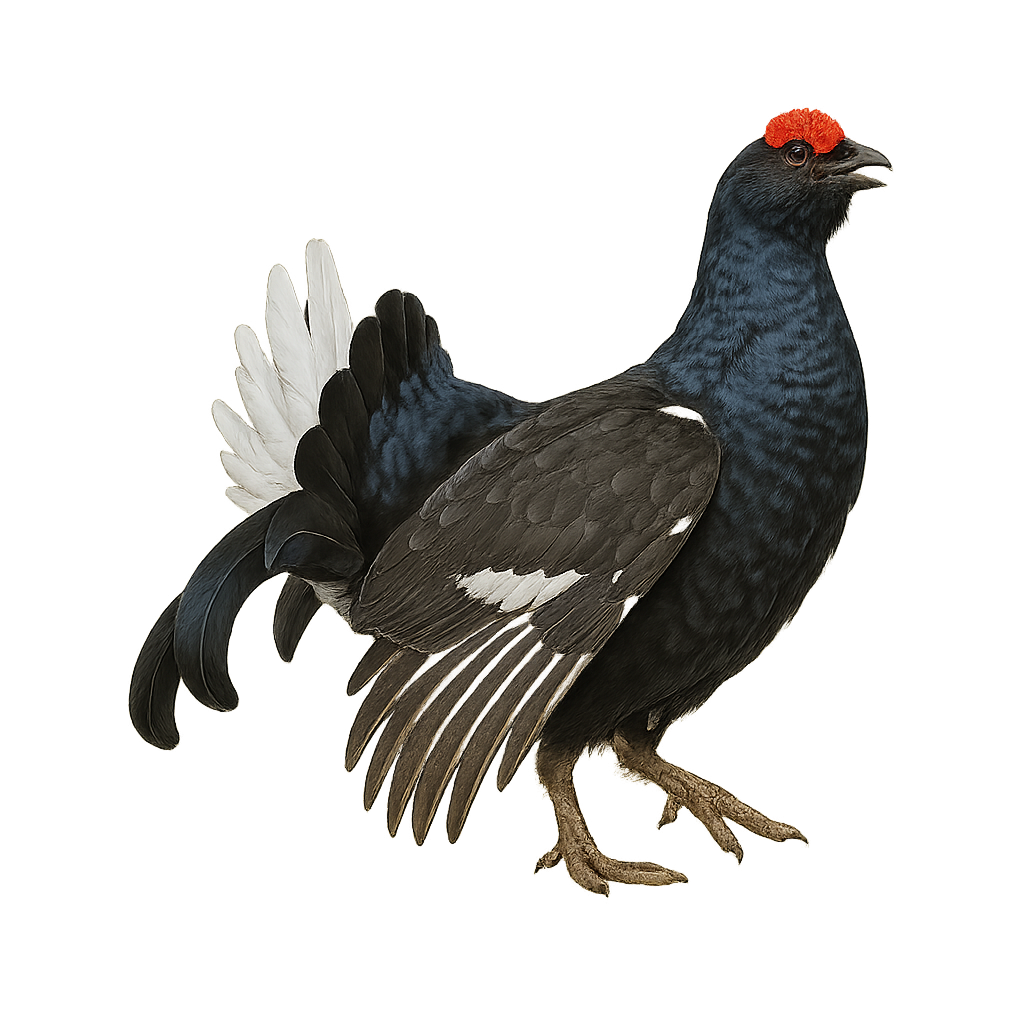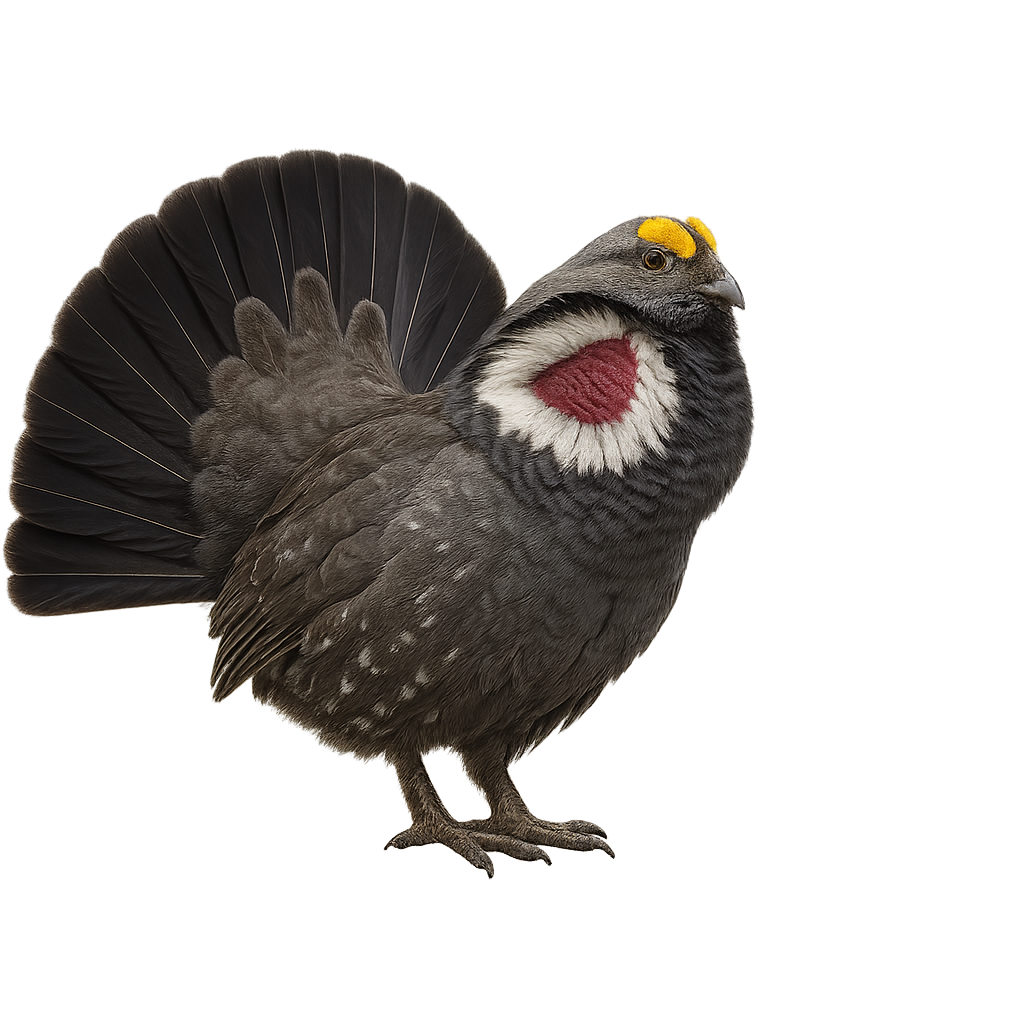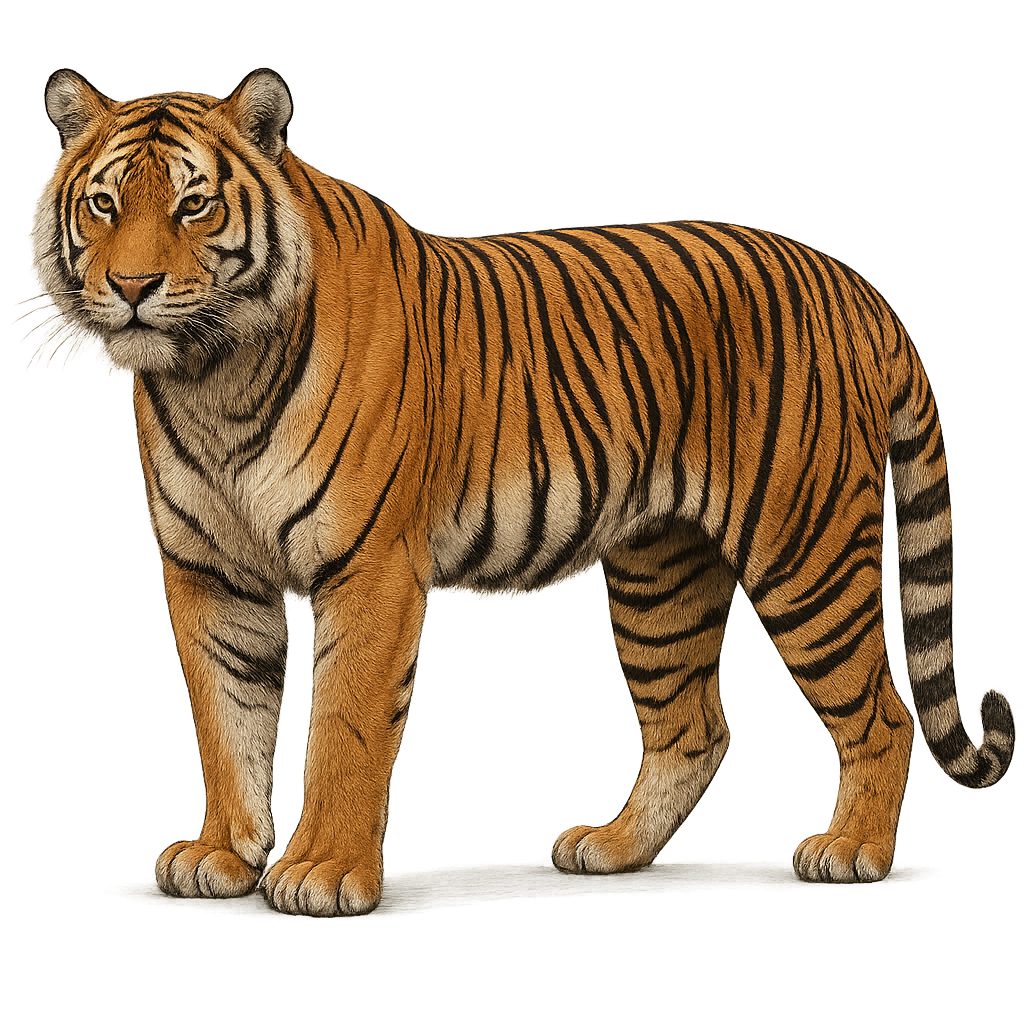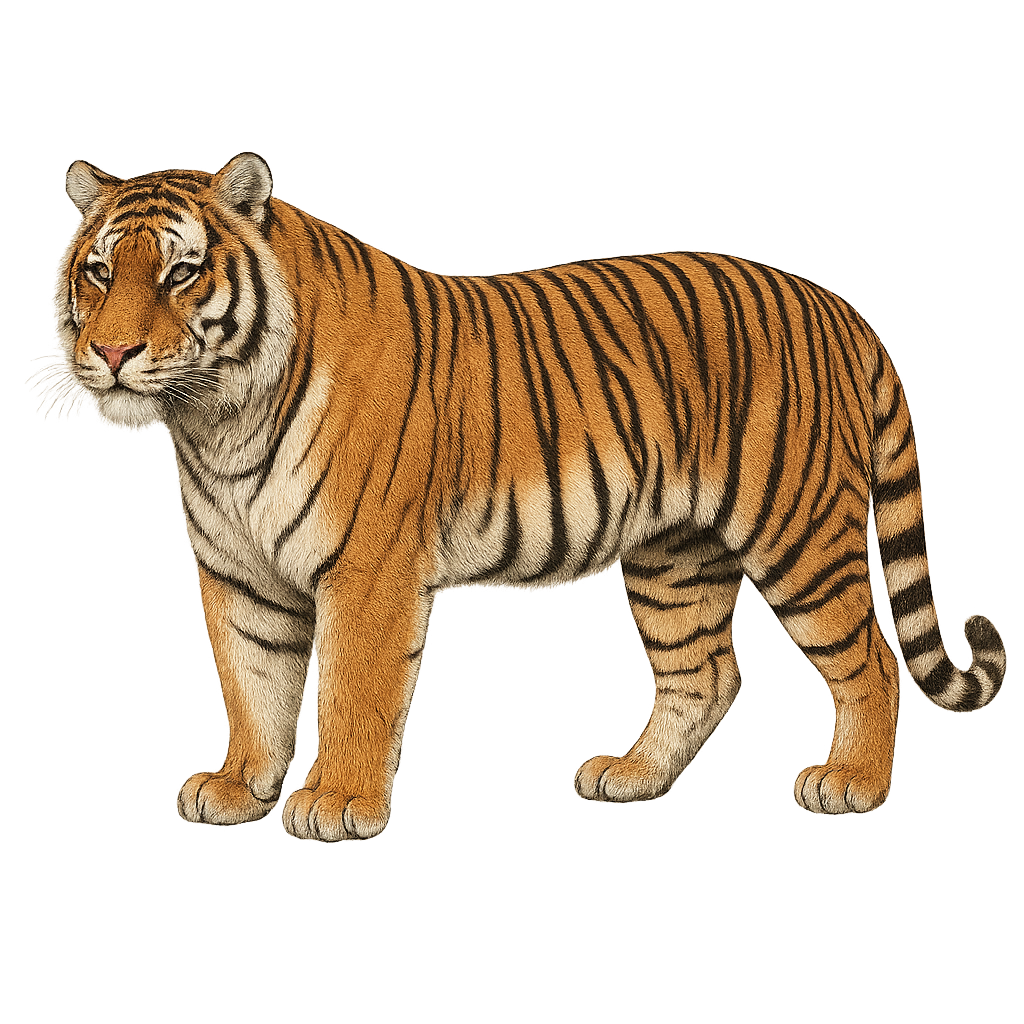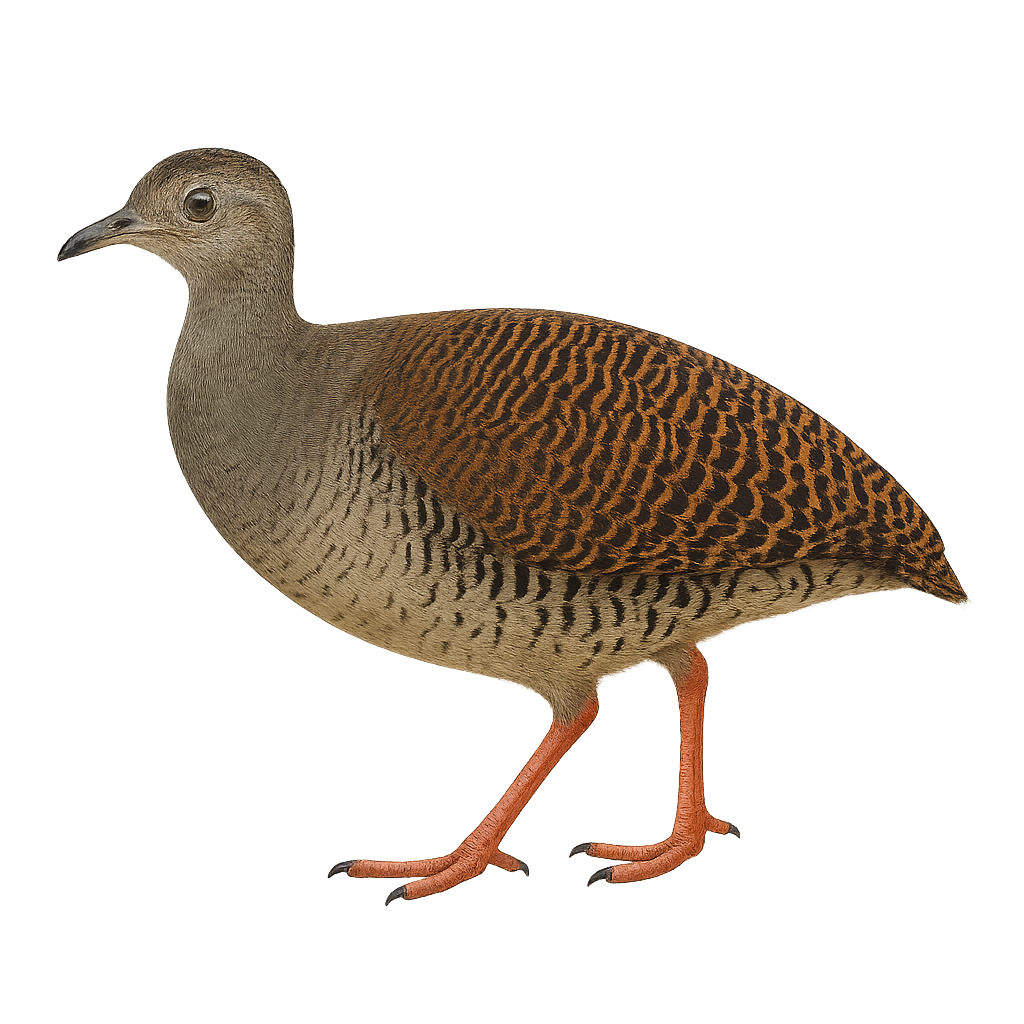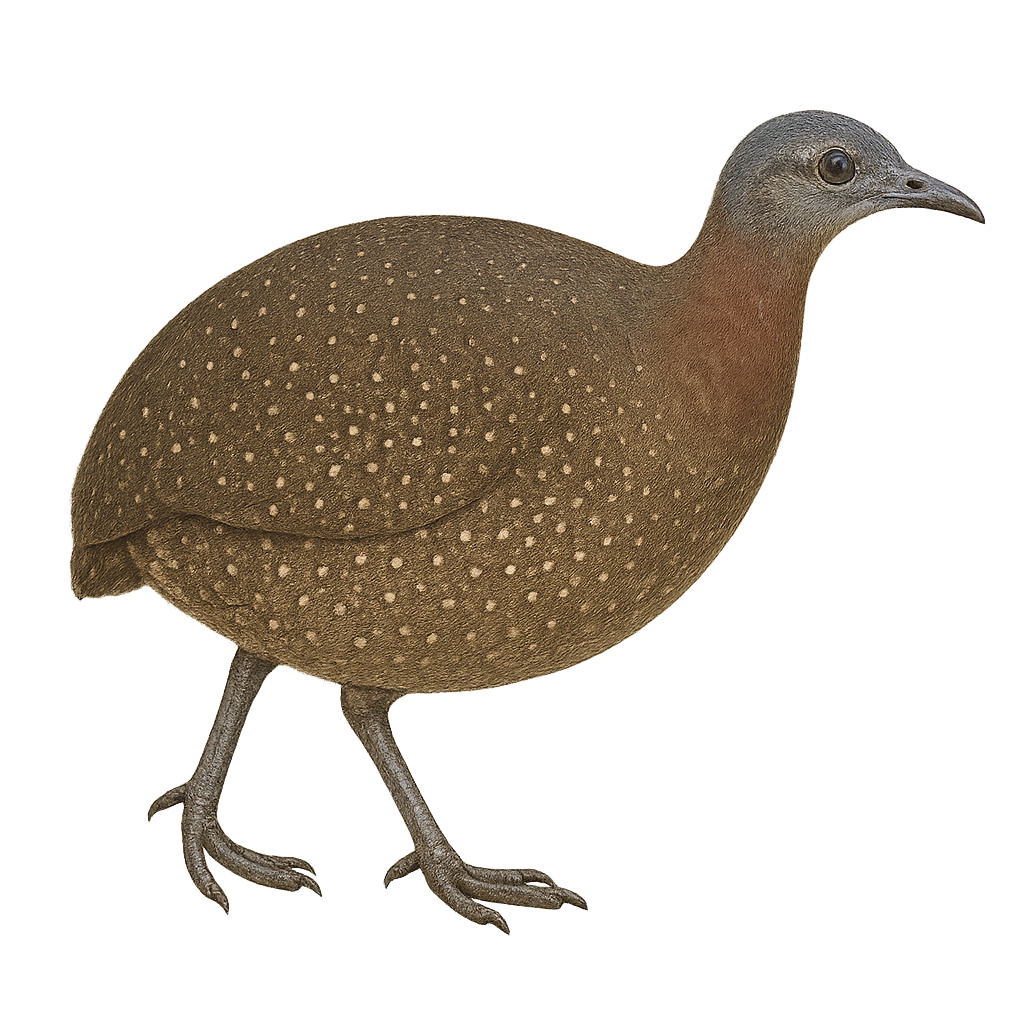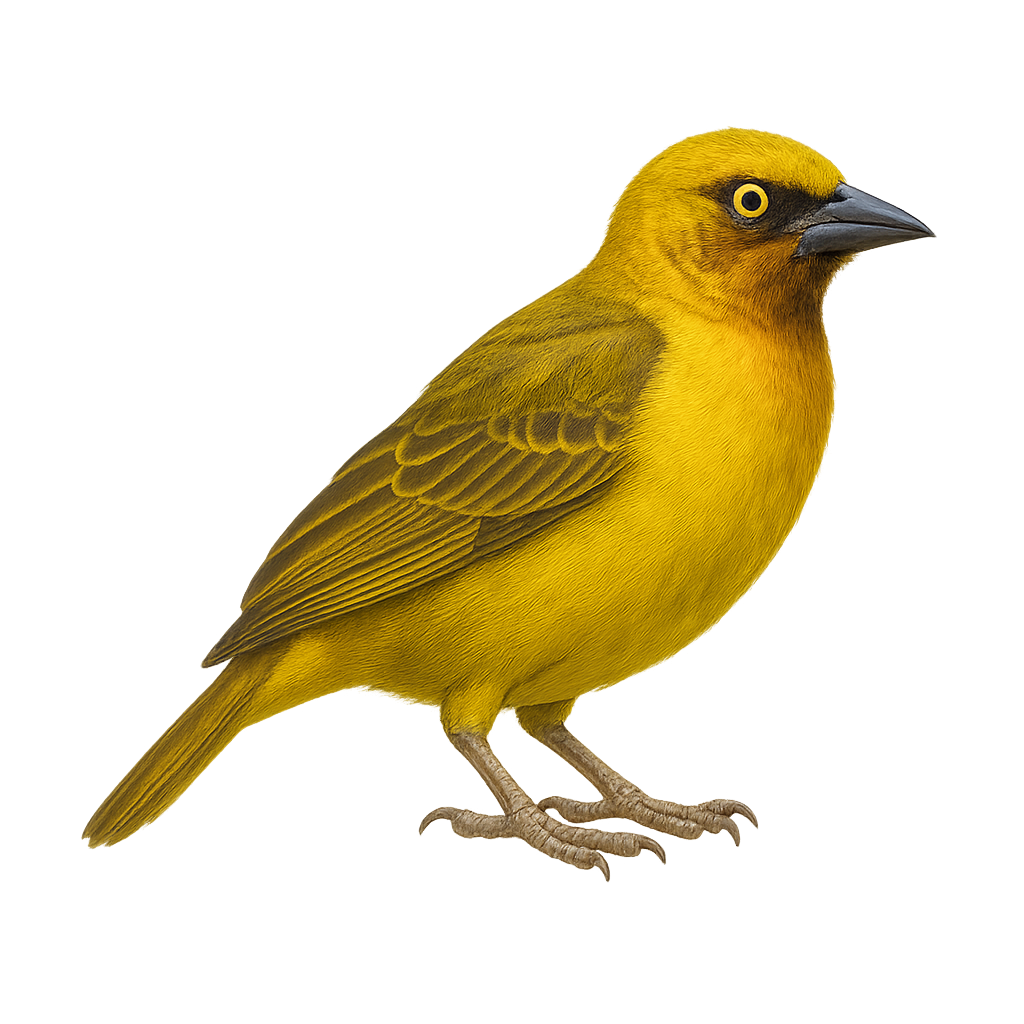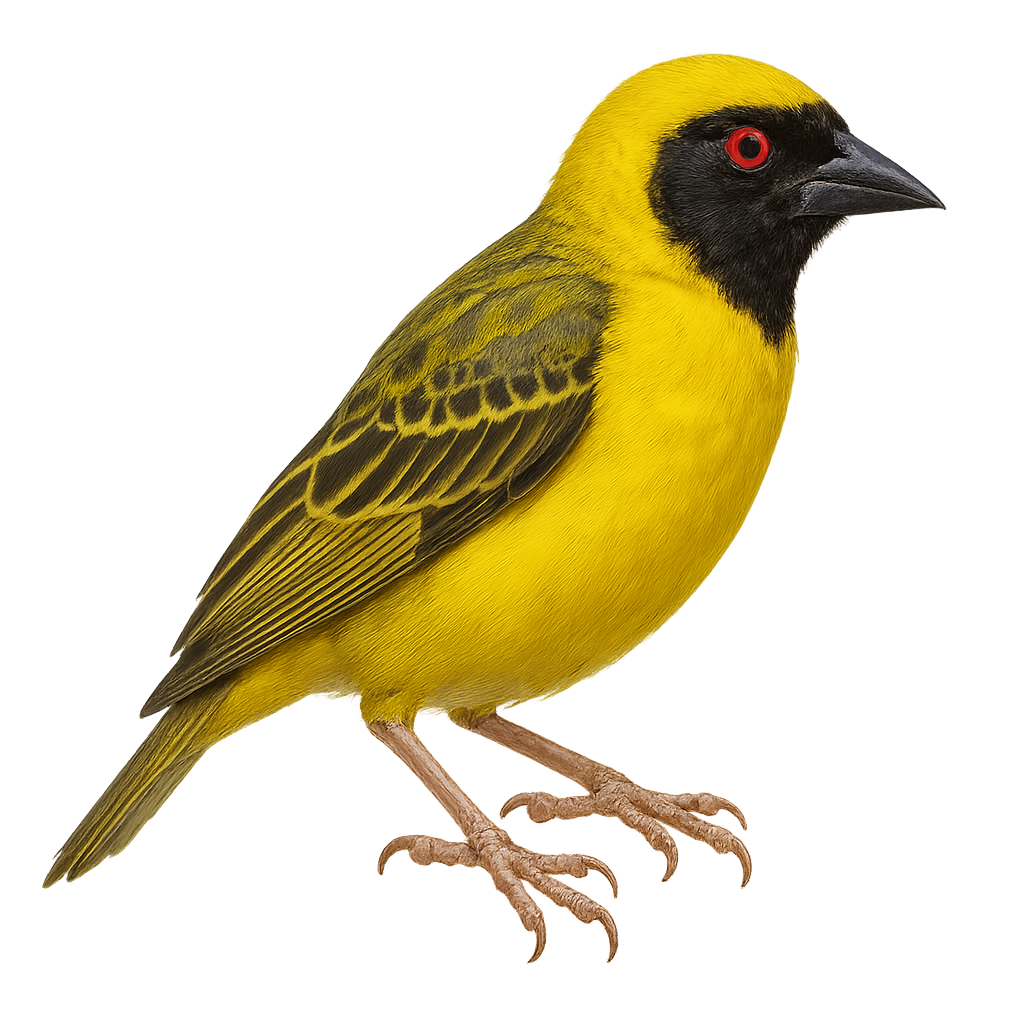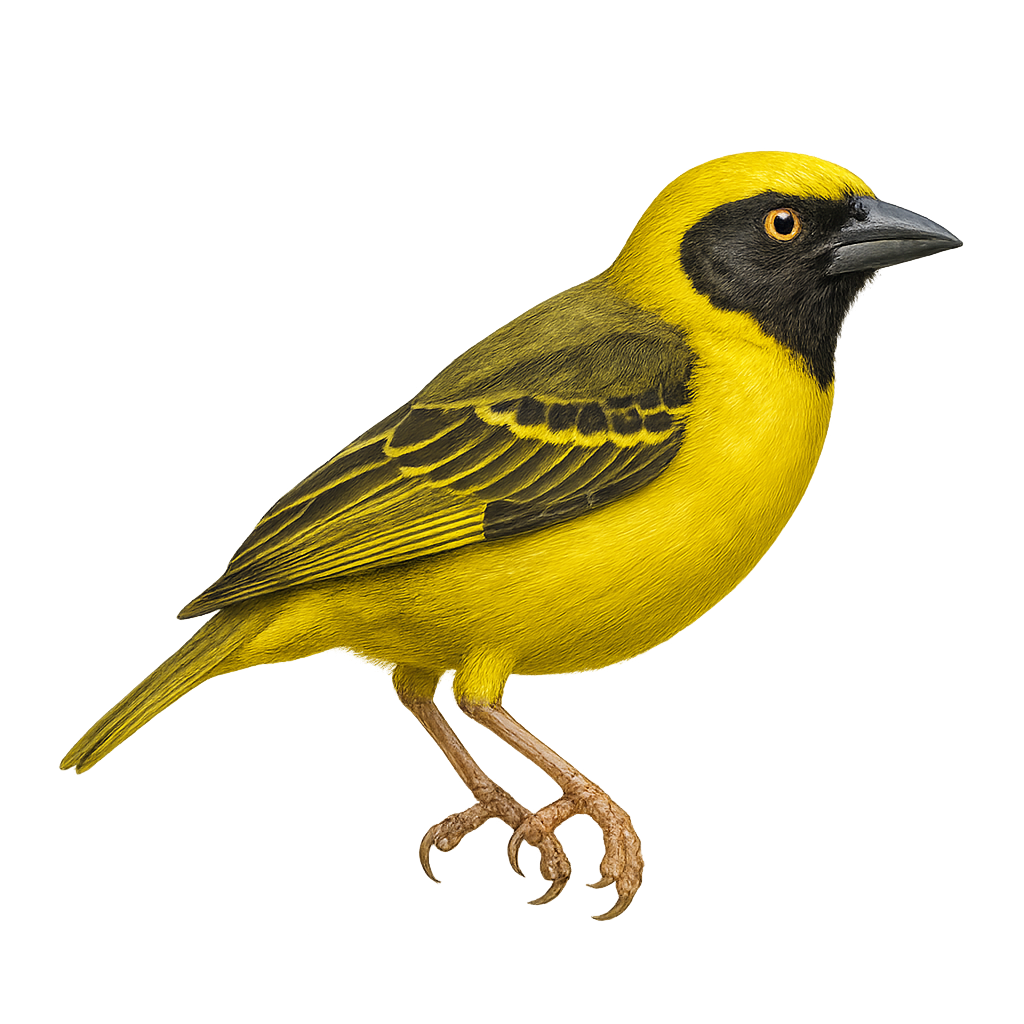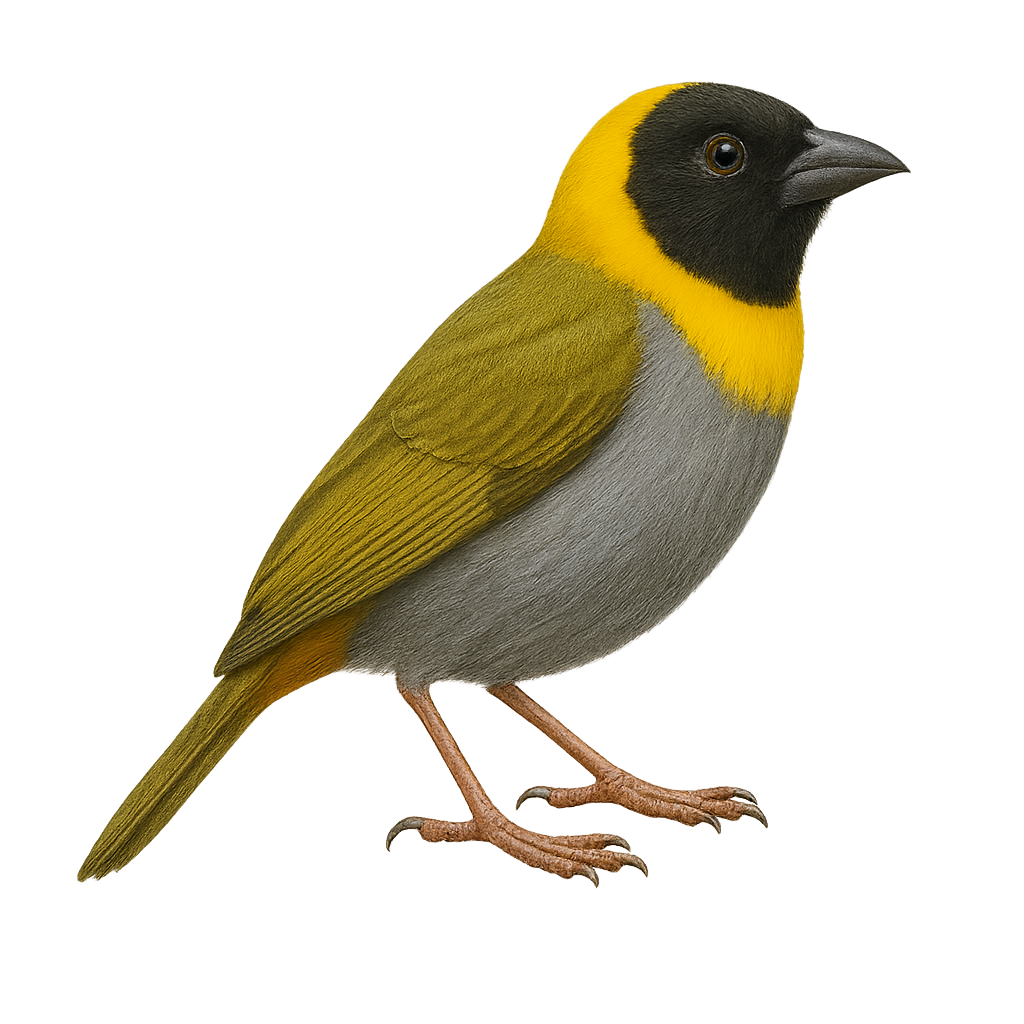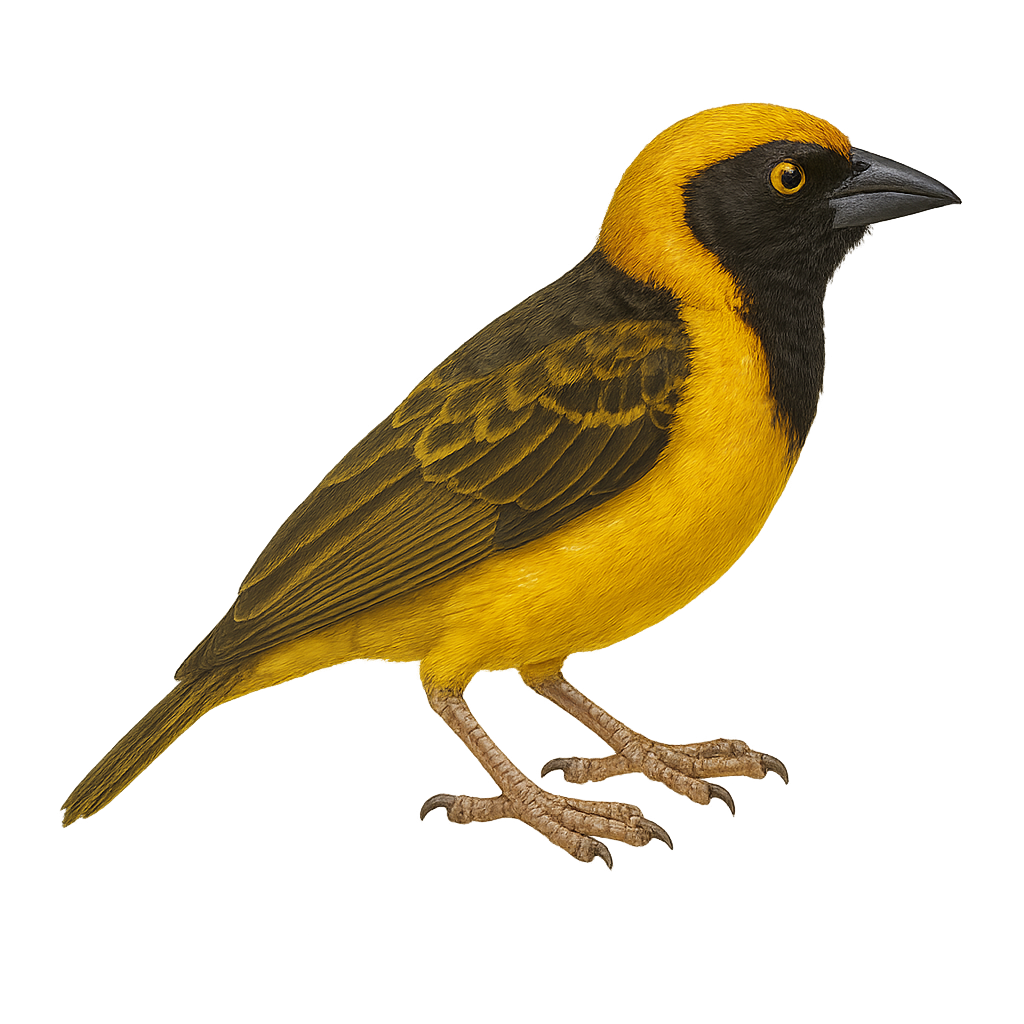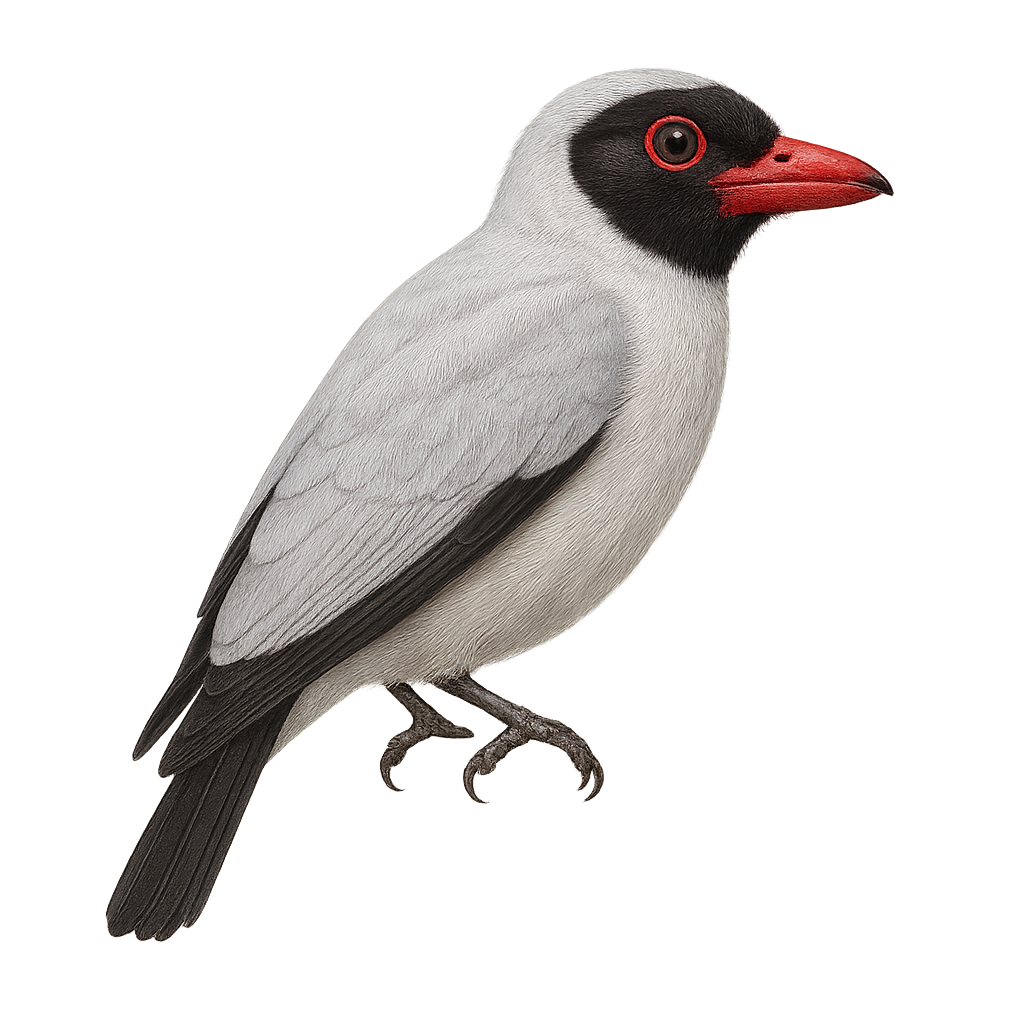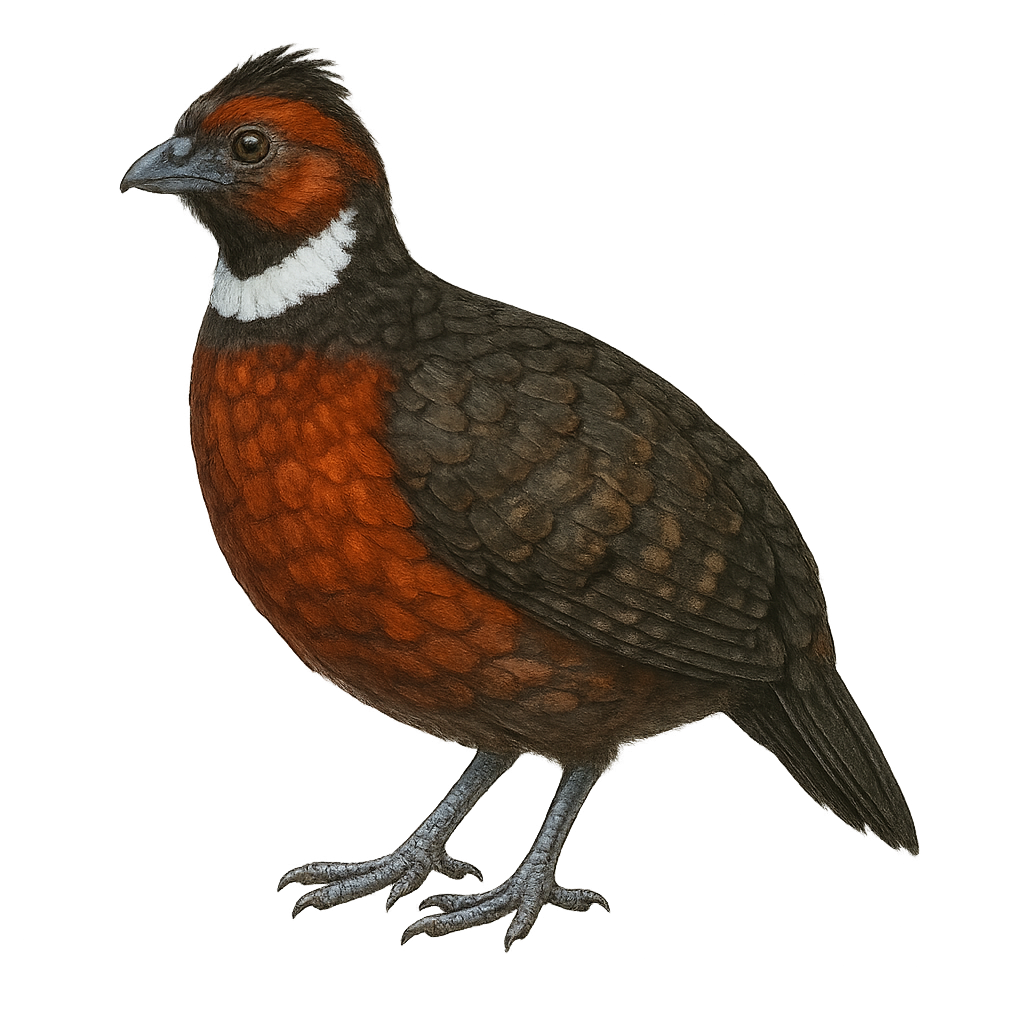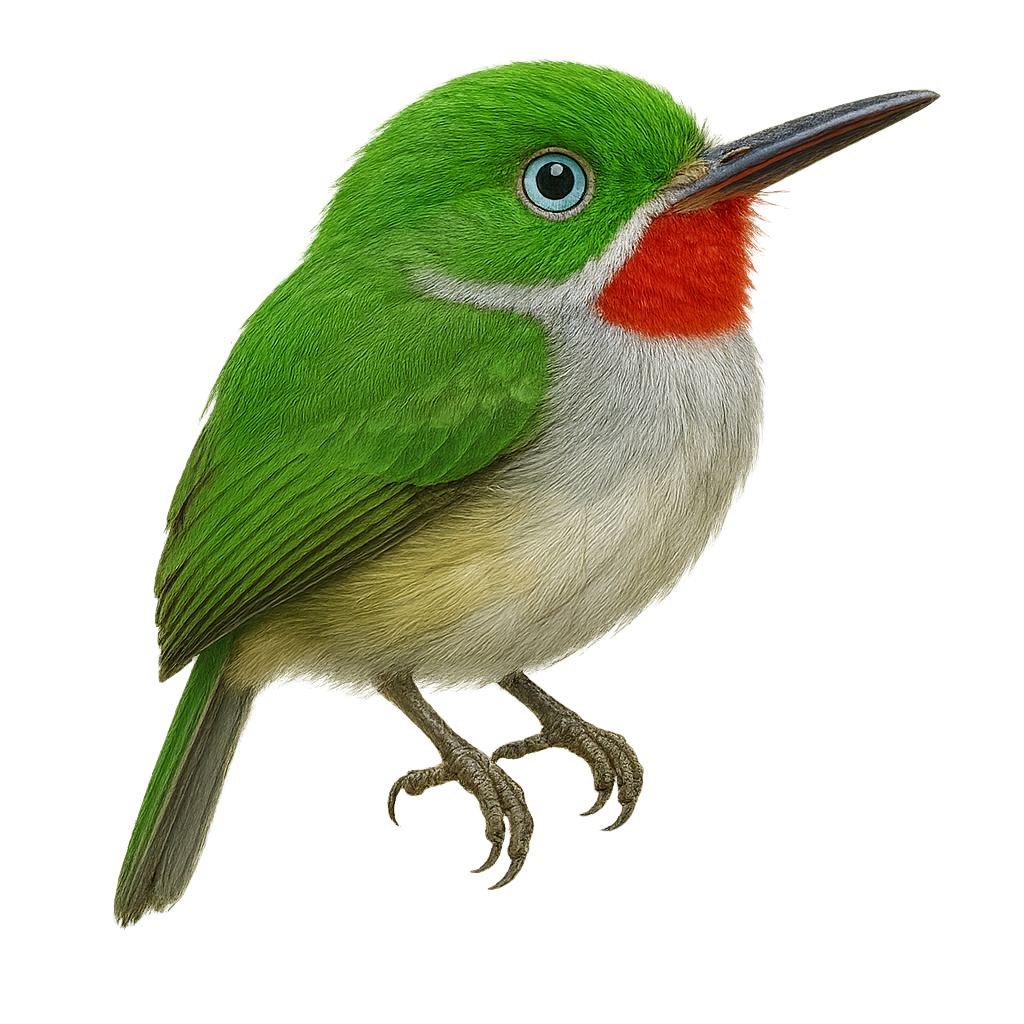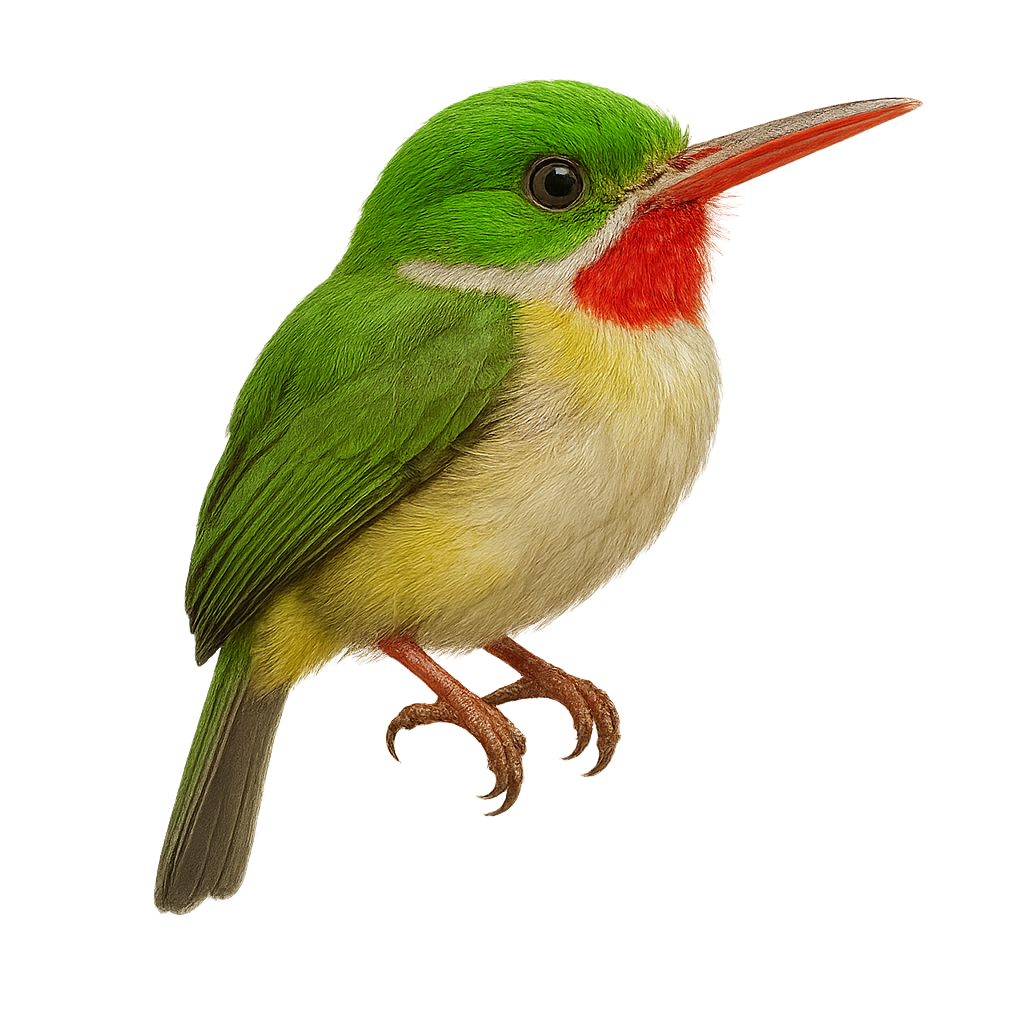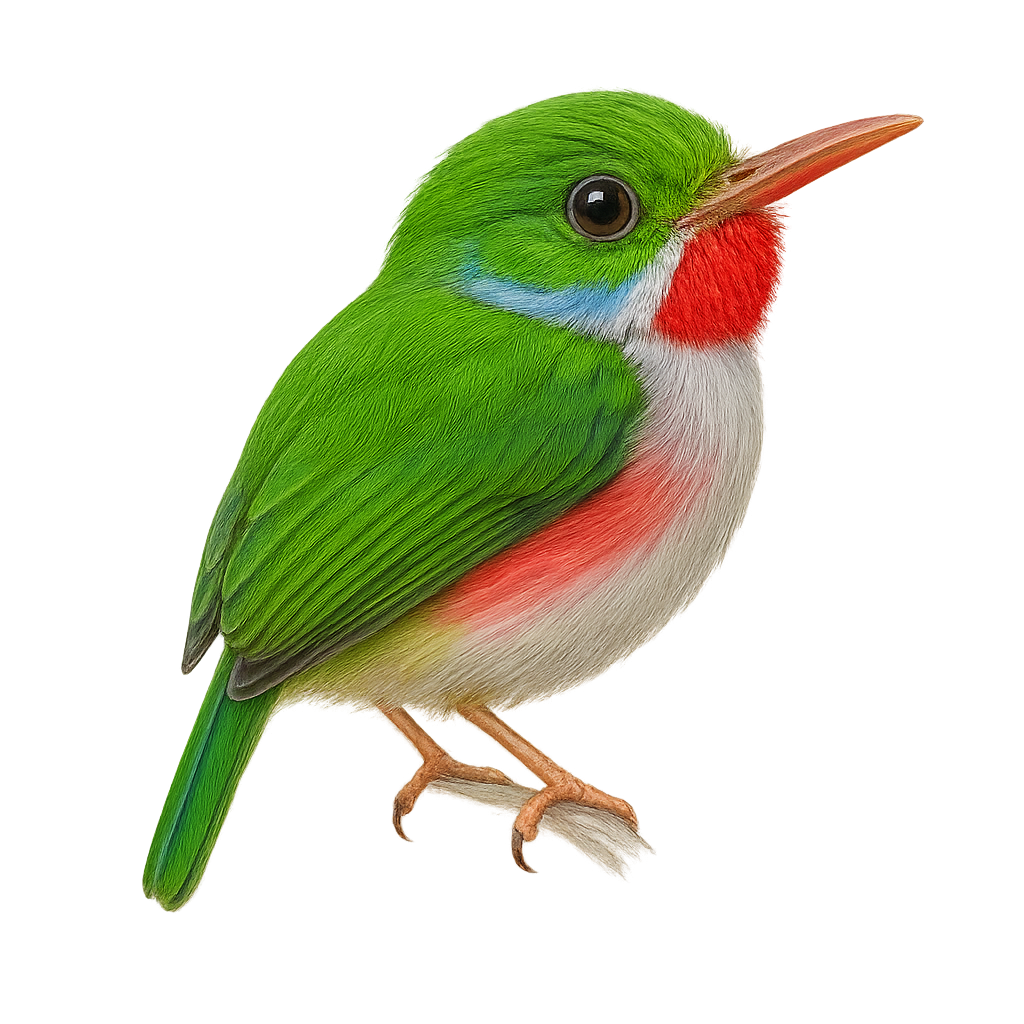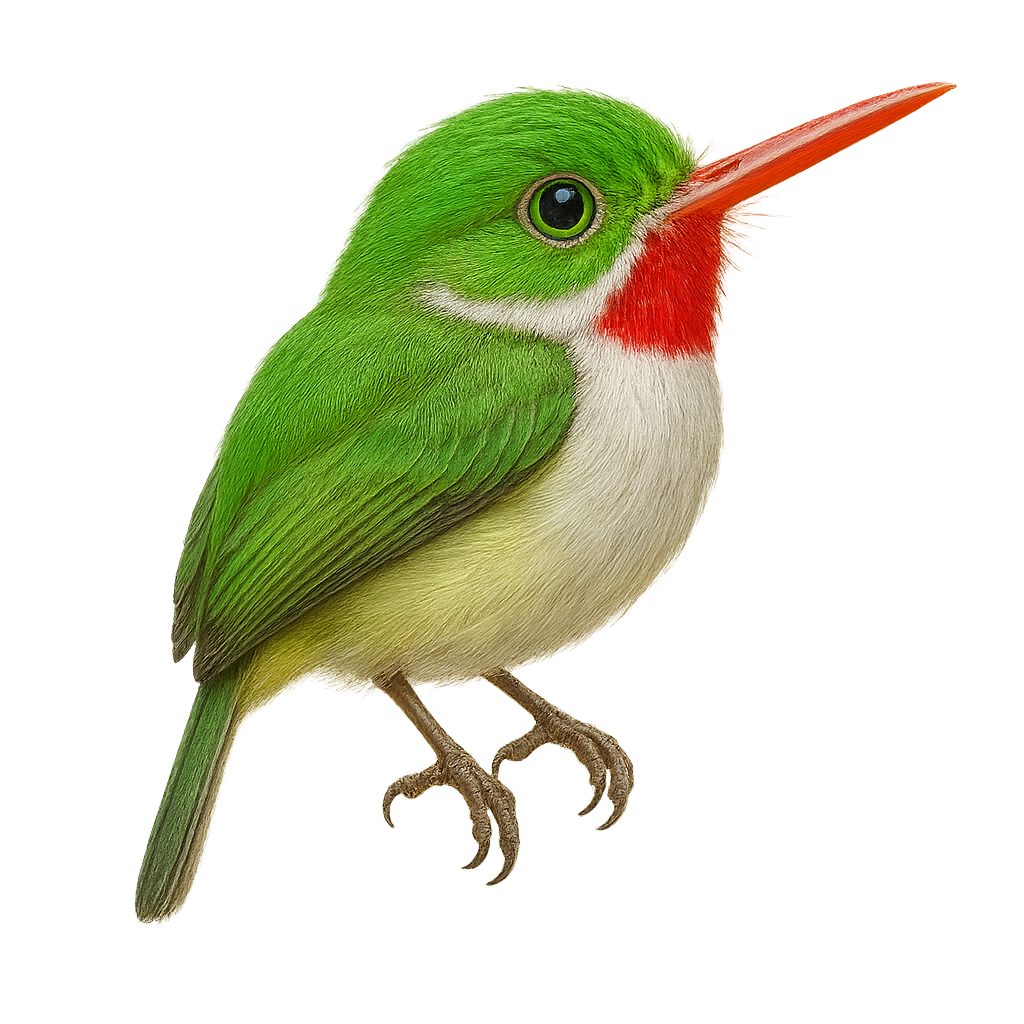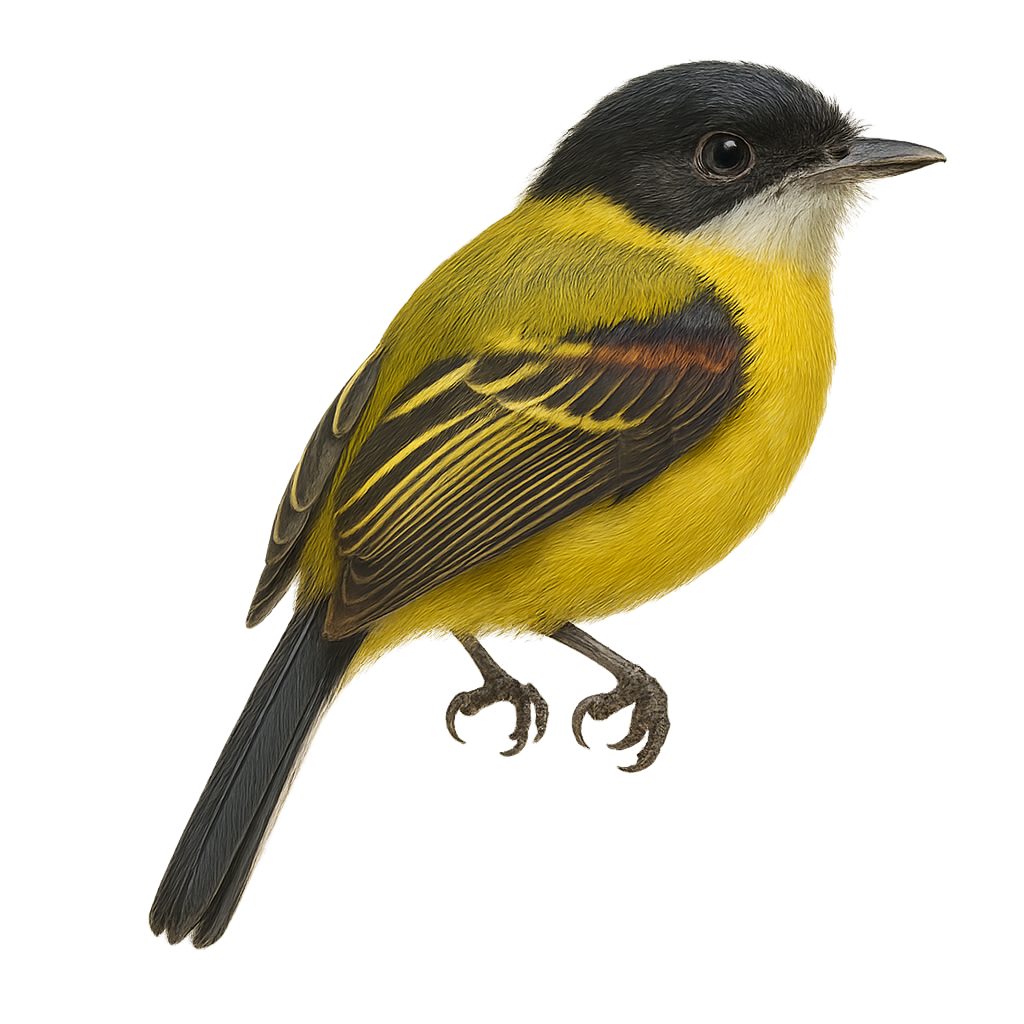The Siberian Grouse, or Falcipennis falcipennis, is a bird from the Phasianidae family, mainly found in the boreal forests of the Russian Far East. This medium-sized bird, measuring about 38 to 45 cm in length, is notable for its dark plumage and subtle patterns that allow it to blend into its surroundings. Males display black feathers with metallic sheens, while females have more brownish plumage. The Siberian Grouse is a sedentary bird, preferring dense coniferous forests where it feeds primarily on buds, leaves, and berries. Although discreet, it is sometimes observed during its spring courtship displays.
The Sage Grouse, known scientifically as Centrocercus urophasianus, is a notable bird of the North American prairies. It is distinguished by its large size and mottled brown, white, and black plumage. Males are particularly striking with their white ruff and yellow air sacs, which they inflate during courtship displays. This species relies heavily on vast sagebrush landscapes for feeding and breeding. Unfortunately, habitat destruction has led to a significant decline in its population. The Sage Grouse is a social bird, often seen in small groups, especially outside the breeding season. Conservation efforts are crucial for its survival.
The Greater Prairie-Chicken, or Tympanuchus cupido, is a notable bird of the North American Great Plains. Known for its brown and white plumage, it is famous for its elaborate courtship displays where males inflate their orange air sacs and produce deep booming sounds to attract females. These birds primarily inhabit open prairies, feeding on seeds, insects, and small fruits. Unfortunately, their habitat is threatened by intensive agriculture and urbanization, leading to a significant population decline. Conservation efforts focus on protecting and restoring their natural habitats to ensure their long-term survival.
The Spruce Grouse, or Canachites canadensis, is a discreet forest bird primarily found in the boreal forests of North America. It is well adapted to its environment, with plumage that blends seamlessly into the underbrush. This medium-sized bird, measuring about 38 to 43 cm, is recognizable by its brown and gray plumage, speckled with white patterns. Males display a red patch above the eye, particularly visible during the breeding season. The Spruce Grouse feeds mainly on conifers but can also consume insects and berries. It is known for its discreet behavior and ability to remain still to avoid predators.
The Caucasian Black Grouse, or Lyrurus mlokosiewiczi, is a captivating bird native to the Caucasus Mountains. This medium-sized grouse is distinguished by the male's glossy black plumage with metallic sheens and lyre-shaped tail. The female, more subdued, has mottled brown feathers that provide excellent camouflage. These birds primarily inhabit alpine meadows, coniferous forests, and shrublands. They are renowned for their spectacular courtship displays, where males gather to showcase their plumage and produce distinctive sounds. Although their population is stable, they face threats from habitat loss and human disturbance.
The Western Capercaillie, or Lyre Grouse, is a large bird primarily found in the coniferous forests and wooded areas of Eastern and Northern Europe, notably in Scandinavia, Russia, and Poland. It typically measures about 40 to 50 cm in length and weighs between 500 and 800 g. Its plumage is mainly brown and black, with white markings and red hues on the chest. The Lyre Grouse is particularly famous for the spectacular courtship dance of the male, who spreads his feathers in a lyre shape to attract a female. It primarily inhabits dense forest habitats and feeds on berries, seeds, young shoots, and insects. While its population remains relatively stable in some areas, the Lyre Grouse is threatened by habitat loss, deforestation, and human disturbances.
The Dusky Grouse, or Dendragapus obscurus, is a medium-sized bird belonging to the Phasianidae family, primarily found in the mountainous regions of western North America. This bird is characterized by its dark gray, almost black plumage, and white markings on its wings. Males display a fan-shaped tail and a yellow vocal sac that inflates during the breeding season to attract females. The Dusky Grouse prefers forested habitats, particularly coniferous forests and shrublands. It mainly feeds on leaves, buds, and insects. Although generally discreet, it can be observed during its spectacular courtship displays.
The Wallcreeper is a small bird found primarily in rocky cliffs and mountains of Europe, notably in the Alps, the Pyrenees, and the Carpathians. It typically measures about 14 to 16 cm in length and weighs between 12 and 20 g. Its plumage is characterized by distinct patterns of white, gray, and black, with very prominent white markings on its wings. The Wallcreeper is an excellent climber, capable of moving on almost vertical rock faces thanks to its strong claws. It primarily feeds on insects, small arachnids, and larvae that it finds in rock crevices. Although it is a relatively rare bird, the Wallcreeper is threatened by the disturbance of its rocky habitats, particularly due to urbanization and the exploitation of natural resources.
The Tiger is a large cat primarily found in the forests, savannas, and grasslands of Asia, notably in India, China, Indonesia, and Russia. It typically measures between 2.5 and 3.5 meters in length, including the tail, and can weigh between 100 and 300 kg, depending on the subspecies. The Tiger is easily recognizable by its striped coat, which varies from yellow-orange to white, with distinctive black bands. It is a solitary and territorial predator, primarily feeding on large herbivores such as deer, wild boars, and buffalo. While it is at the top of the food chain, the Tiger is threatened by habitat loss, poaching for its fur and bones, and conflicts with human populations. Some subspecies, such as the Sumatran Tiger and the Siberian Tiger, are particularly endangered.
The Siberian tiger, or Panthera tigris altaica, is the largest living feline. It is distinguished by its thick, light-colored fur, adapted to the harsh winters of its natural habitat. Its black stripes on a pale orange background allow it to camouflage in coniferous forests and snowy steppes. This solitary predator is a nocturnal hunter, primarily feeding on large ungulates like deer and wild boar. Although its territory spans vast areas, it is threatened by deforestation and poaching. Conservation efforts are crucial for its survival, as it is classified as endangered by the IUCN.
The thylacine, or Tasmanian tiger, was a large nocturnal carnivorous marsupial up to 1.8 m long (including tail) and weighing 15–30 kg, with pale yellow fur marked by dark dorsal stripes. Endemic to Tasmania, it inhabited rainforests, scrublands, and grasslands, preying mainly on wallabies and birds at dusk and night. Solitary and shy, it sheltered in natural dens or rock crevices.
The Bengal Tiger is a subspecies of tiger found primarily in the forests of India, Bangladesh, Nepal, Bhutan, and Myanmar. It typically measures between 2.7 and 3.1 meters in length, with a tail of 1 to 1.2 meters, and weighs between 200 and 260 kg. Its fur is yellow-orange with distinct black stripes, and its impressive size makes it one of the largest and most powerful tiger subspecies. The Bengal Tiger is a solitary and territorial predator, primarily feeding on large herbivores such as deer, wild boars, and buffalo. Although its population is declining, the Bengal Tiger is one of the best-protected tiger subspecies, with active conservation efforts in wildlife reserves and national parks. It is still threatened by habitat loss, poaching, and human-wildlife conflicts.
The Black-throated Babbler, or Stachyris nigricollis, is a discreet and fascinating bird primarily inhabiting the tropical forests of Southeast Asia. This small passerine is recognizable by its black throat contrasting with its olive-brown plumage. It mainly feeds on insects and small invertebrates, which it finds by rummaging through dense undergrowth. Although often difficult to observe due to its suspicious nature, it is frequently heard thanks to its melodious and repetitive song. The Black-throated Babbler plays an important role in the forest ecosystem by helping control insect populations. It is also an indicator of the health of tropical forests, as it is sensitive to disturbances in its natural habitat.
The Bartlett's Tinamou, or Crypturellus bartletti, is a shy, ground-dwelling bird found primarily in the humid tropical forests of the Amazon. It is medium-sized, measuring about 28 to 32 cm in length, with a reddish-brown plumage that blends seamlessly into its forest environment. Its call, often heard at dusk, is a soft whistle that echoes through the canopy. This bird is mostly solitary, feeding on fallen fruits, seeds, and insects. Although capable of flight, it prefers to run to evade predators. Its elusive nature and dense habitat make it difficult to spot, but it plays a crucial role in seed dispersal, contributing to the health of its ecosystem.
The Highland Tinamou, or Nothocercus bonapartei, is a medium-sized ground bird belonging to the Tinamidae family. It is primarily found in the humid forests of the Andes, ranging from Venezuela to Bolivia. This elusive bird is more often heard than seen, due to its cryptic plumage that blends seamlessly into the dense undergrowth. It feeds mainly on fallen fruits, seeds, and insects. The Highland Tinamou is a solitary bird, although it can sometimes be observed in small groups. Its ability to run swiftly and fly short distances allows it to escape predators. Despite its elusive nature, it plays a crucial role in seed dispersal, aiding forest regeneration.
The Elegant Crested Tinamou, or Eudromia elegans, is a ground-dwelling bird native to South America, mainly found in Argentina. It is recognizable by its distinctive crest and speckled brown plumage, which helps it blend into its environment. Measuring about 40 cm in length, it has a robust body and strong legs adapted for rapid running. Although capable of flight, it prefers to run to escape predators. Its natural habitat includes open grasslands, savannas, and shrublands. The Elegant Crested Tinamou is a gregarious bird, often seen in small groups. It primarily feeds on seeds, fruits, and insects, playing an important role in seed dispersal and insect population control.
The Spectacled Weaver, or Ploceus ocularis, is a medium-sized bird known for its bright yellow plumage and distinctive eye markings resembling spectacles. It primarily inhabits wooded areas and savannas in sub-Saharan Africa. This bird is renowned for its weaving skills, constructing intricate and suspended nests. Males are particularly active during the breeding season, displaying courtship behaviors to attract females. The Spectacled Weaver is a social bird, often seen in small groups. It primarily feeds on insects and seeds, playing a role in its ecosystem's balance.
The Southern Masked Weaver is a medium-sized African bird known for its exceptional nest-building skills. Males display a distinctive black head and bright yellow plumage, while females and juveniles are duller with brownish tones. They primarily inhabit savannas, woodlands, and marshes, feeding on seeds, insects, and nectar. Their song is a mix of chirps and whistles, often heard during the breeding season. Males construct intricate nests to attract females, using grass blades and leaves. These birds are social and live in colonies, making them fascinating to observe.
The Baglafecht Weaver is a medium-sized bird, measuring about 15 cm in length. It is easily recognizable by its bright yellow plumage, contrasting with a black head and brownish wings. Both males and females have similar colors, though males are generally more vibrant. This bird primarily feeds on seeds but also consumes insects, especially during the breeding season. It is found in various habitats, including forests, savannas, and agricultural areas. The Baglafecht Weaver is known for its complex nests, often hanging from tree branches. It is social and often lives in colonies, making it fascinating to observe.
The Nelicourvi Weaver is an endemic bird of Madagascar, recognizable by its bright yellow plumage and distinctive black patterns on its head and back. It primarily inhabits the island's humid forests and wooded areas. This bird is known for its complex nests, often suspended from tree branches. The male builds the nest to attract a female, and if unsuccessful, he destroys it to build another. The Nelicourvi Weaver is a sociable bird, often seen in small groups. It primarily feeds on insects and seeds. Although its habitat is threatened by deforestation, it is currently classified as "least concern" by the IUCN.
The Ploceus grandis, or Giant Weaver, is a bird from the Ploceidae family, renowned for its nest-weaving skills. It features bright yellow plumage with brown hues on its wings and tail. Its head is adorned with a distinctive black mask, contrasting with its sturdy, conical beak. This social bird lives in colonies and is often found in the savannas and wooded areas of sub-Saharan Africa. It primarily feeds on seeds, insects, and small fruits. The Giant Weaver is also known for its melodious songs and elaborate courtship displays. Although widespread, it sometimes faces threats from habitat loss.
The Lesser Masked Weaver, Ploceus intermedius, is a medium-sized bird belonging to the Ploceidae family. It is primarily found in sub-Saharan Africa, inhabiting savannas, woodlands, and marshes. This bird is recognizable by its bright yellow plumage and distinctive black facial mask in males. Females and juveniles have duller, generally brownish plumage. The Lesser Masked Weaver is a prolific nest builder, using grass blades and leaves to create complex structures suspended from branches. It primarily feeds on insects, seeds, and fruits. Its song is a mix of chirps and whistles, often heard during the breeding season.
The Masked Tityra, or Tityra semifasciata, is a medium-sized bird belonging to the Tityridae family. It is characterized by its predominantly white plumage with black wings and tail, and a bright red patch around the eyes. This bird is often found in the tropical and subtropical forests of Central and South America, where it primarily feeds on fruits and insects. The Masked Tityra is a social bird, often seen in small groups or pairs. Its song is a mix of whistles and chirps, adding to the natural soundscape of its habitat. Although relatively common, preserving its habitat is crucial for its survival.
The Red-fronted Wood-Quail, scientifically known as Odontophorus erythrops, is a medium-sized terrestrial bird found primarily in the humid forests of the Andes. It is characterized by its dark brown plumage with scaly patterns and a distinctive red patch on its forehead. This bird is more often heard than seen, as it prefers to hide in dense vegetation. It feeds mainly on seeds, fruits, and insects found by scratching the forest floor. The Red-fronted Wood-Quail is monogamous and forms stable pairs. Its elusive nature and challenging habitat make it a difficult subject for birdwatchers and photographers.
The Marbled Wood-Quail, or Odontophorus gujanensis, is a terrestrial bird primarily inhabiting the dense tropical forests of South America. It is recognizable by its marbled brown plumage, which provides excellent camouflage. This medium-sized bird measures about 25 to 30 cm in length and weighs between 300 and 400 grams. It is mainly terrestrial, often moving in small groups in search of food, which consists mainly of seeds, fruits, and insects. Its ability to remain still and silent makes it difficult to spot in its natural habitat. The Marbled Wood-Quail is also known for its loud and melodious calls, often heard at dusk.
The Narrow-billed Tody, or Todus angustirostris, is a small, colorful bird endemic to the island of Hispaniola, shared by Haiti and the Dominican Republic. It is distinguished by its bright green plumage, vivid red throat, and pale yellow belly. Measuring about 11 cm in length, it has a thin, slightly curved beak, adapted to its diet mainly consisting of insects. This tody is often seen in humid forests and wooded areas, where it moves nimbly in search of food. Although it is relatively tolerant, it remains discreet and blends easily into its environment thanks to its plumage.
The Broad-billed Tody, Todus subulatus, is a small, colorful bird endemic to the island of Hispaniola, which is shared by Haiti and the Dominican Republic. It is characterized by its bright green plumage on the back, a white belly, and a striking red throat. Its long, slender bill is adapted for catching insects, its primary food source. This small bird measures about 10 to 11 cm in length and weighs between 5 and 7 grams. It primarily inhabits tropical rainforests but can also be found in drier wooded areas. The Broad-billed Tody is a territorial bird, often seen alone or in pairs, and is known for its high-pitched, repetitive song.
The Cuban Tody, or Todus multicolor, is a small bird endemic to Cuba, renowned for its vibrant plumage and fascinating lifestyle. Measuring about 10 to 11 cm in length, this bird features bright green feathers on its back, a white belly, and a striking red throat, making it easily identifiable. It primarily inhabits the island's humid forests, mangroves, and wooded areas. The Cuban Tody is an insectivore, feeding mainly on small insects and spiders, which it captures with quick and precise movements. It is also known for its melodious song and elaborate courtship displays. Although its habitat is limited to Cuba, it is relatively common and not currently threatened.
The Jamaican Tody, or Todus todus, is a small bird endemic to Cuba, known for its bright green plumage and vivid red throat. Measuring about 11 cm in length, it is easily recognizable by its broad, flattened beak, perfect for catching insects. This small bird primarily inhabits humid forests, mangroves, and wooded areas, where it feeds mainly on insects and small fruits. Its song is a soft "tot-tot," often heard in the undergrowth. Although its population is stable, preserving its natural habitat is crucial for its survival.
The Golden-winged Tody-Flycatcher, Poecilotriccus calopterus, is a small bird from the Tyrannidae family. It is notable for its golden-winged feathers and primarily olive-green plumage. This bird inhabits humid forests and wooded areas in South America, particularly in Colombia, Ecuador, and Peru. Often seen in pairs or small groups, it feeds on insects caught in flight. Its modest size and discreet behavior can make it difficult to spot. Although its habitat is threatened by deforestation, it is currently listed as "Least Concern" by the IUCN.


